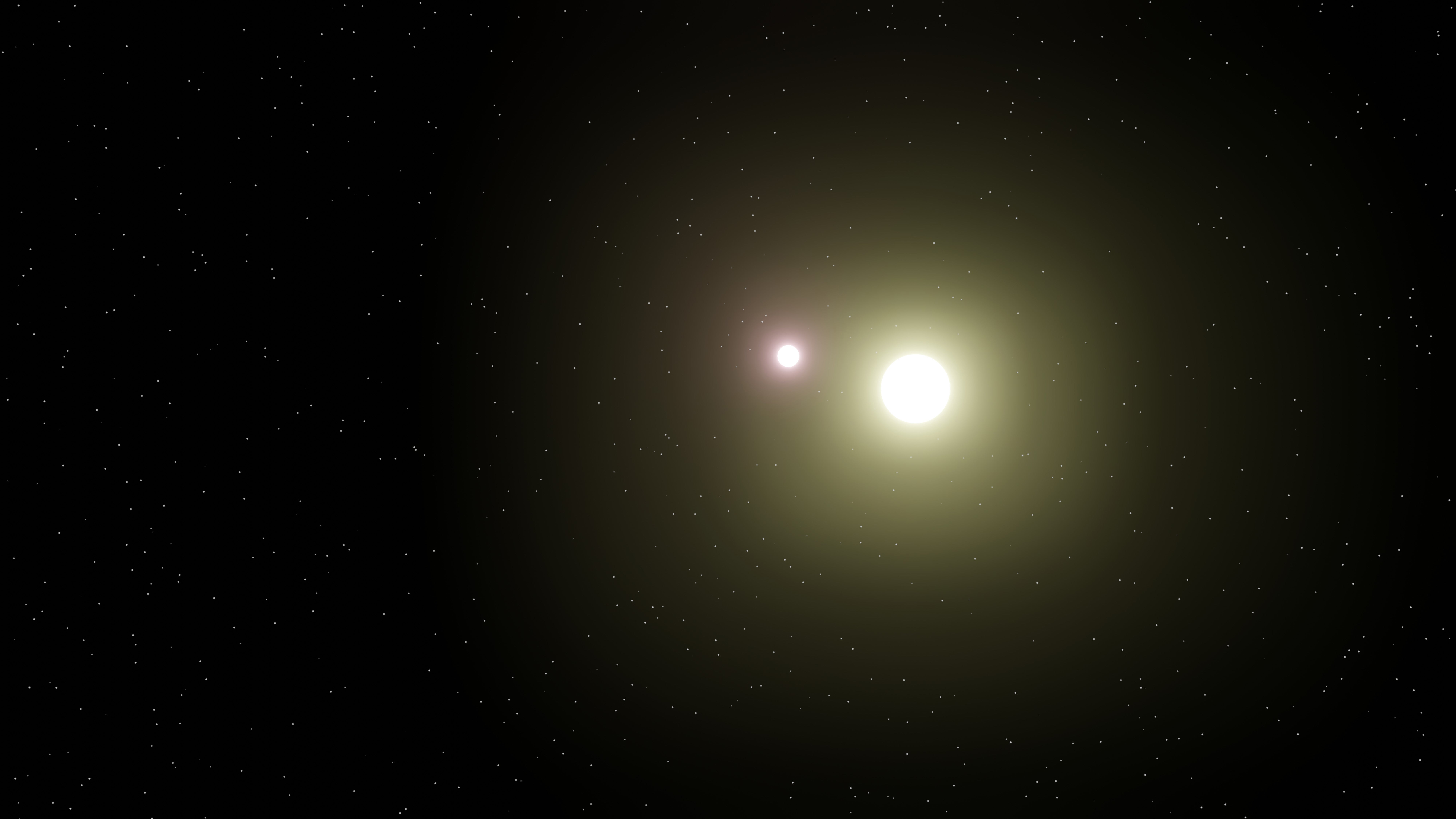The Independent's journalism is supported by our readers. When you purchase through links on our site, we may earn commission.
Scientists spot ‘cataclysmic star pair’ whirring around each other in spectacular dance
The pair of stars orbit so closely, that they circle each other in less than an hour

Astronomers just found one star system out of 1 billion with two stars locked in a tight, whirling dance and confirmed a decades old theory.
ZTF J1813+4251 is a binary star system about 3,000 light years from Earth in the constellation Hercules, and it consists of a Sun-like star orbiting a white dwarf, the dense remnant core of a burned out star. The two stars are so close, the white dwarf has been stealing material from the Sun-like star, creating periodic flashes of light as the material falls on the award star — that makes the pair what astronomers call a cataclysmic variable.
And ZTF J1813+4251 exhibits the closest orbit of any cataclysmic variable pair yet found, with the two stars completing an orbit around each other in just 51 minutes. That is exactly what a 30-year-old theory about tightly orbiting binary stars predicted, according to MIT astrophysicist Kevin Burdge, who is the co-author along with scientists from Harvard and other institutions of a paper on ZTF J1813+4251 published Wednesday in the journal Nature.
“This is a special system,” Dr Burdge said in a statement. “We got doubly lucky to find a system that answers a big open question, and is one of the most beautifully behaved cataclysmic variables known.”
To find ZTF J1813+4251, Dr Burdge and his colleagues used an algorithm to sift through a catalog of 1 billion stars to find 1 million stars that flashed about every hour. They then looked through those million stars manually for stars that seemed interesting, and ZTF J1813+4251 seemed interesting.
“This thing popped up, where I saw an eclipse happening every 51 minutes, and I said, ok, this is definitely a binary,” Dr Burdge said.
Follow up observations using the Gran Telescopio Canarias in Spain and W.M. Keck Observatory in Hawaii revealed ZTF J1813+4251 to consist of a white dwarf about half the mass of the Sun and one one hundredth its size orbiting a Sun-like star about the size and mass of Jupiter.
The reason the Sun-like star is so small, the researchers determined through computer simulations, is that the white dwarf has been stealing its companion’s outer layer of hydrogen gas for millions of years, so that the Sun-like star is now reduced to its denser helium-rich core. That reduction in size is what allows for the pair’s close orbit, an orbit that will likely get closer over the next 70 million years, getting as tight as 18 minutes an orbit before the two stars eventually drift apart.
“This is a rare case where we caught one of these systems in the act of switching from hydrogen to helium accretion,” Dr Burdge said. It was predicted that such objects would transition to ultrashort orbits, but not confirmed, he said, and “this discovery puts that to rest.”
Moreover, he added, it’s now confirmed that the intensity of the interactions between the two stars generate gravitational waves, ripples in the space-time fabric of reality. That fact could help astronomers find and study further cataclysmic variable stars.
Gravitational waves are allowing us to study the universe in a totally new way,” Dr Burdge said.
Subscribe to Independent Premium to bookmark this article
Want to bookmark your favourite articles and stories to read or reference later? Start your Independent Premium subscription today.

Join our commenting forum
Join thought-provoking conversations, follow other Independent readers and see their replies